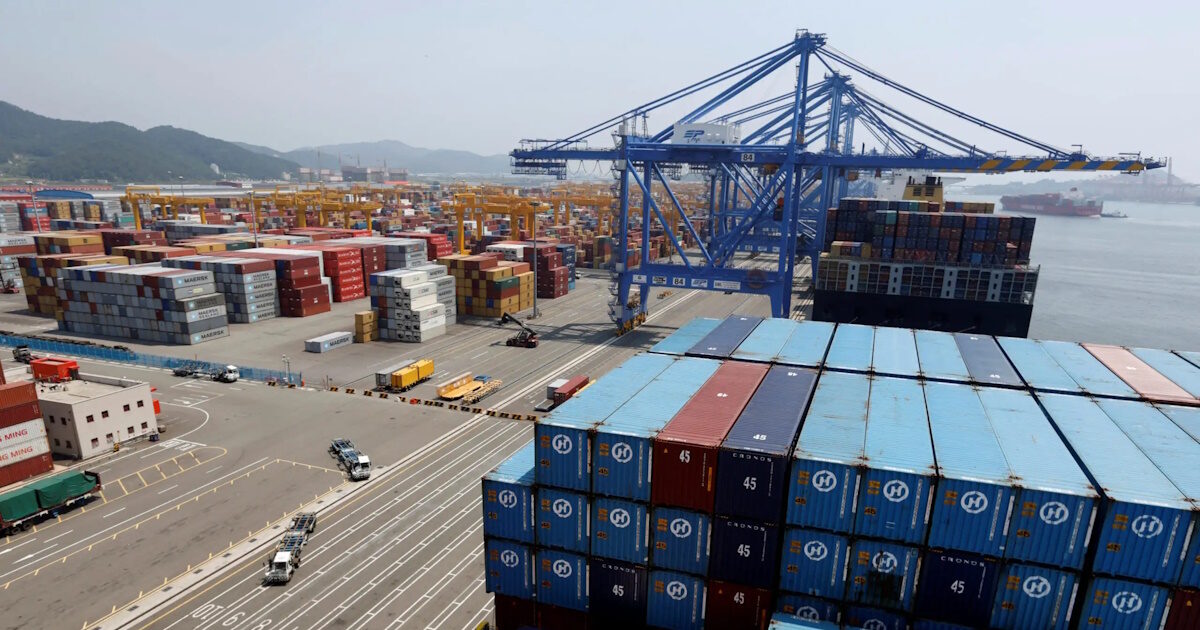The new US Customs Customs were in force today (7.8.25) duties to products imported from dozens of economies, in the context of the US President’s venture Donald Trump To redefine international commercial policy and create a new worldwide commercial class, more favorable – according to him – for American production.
Specifically, the additional, “reciprocal” duties imposed by Donald Trump came into force at 07:01 (Greek time), replacing 10% “base” duties implemented since April to almost all products entering the US.
“It’s midnight !!! Billions of customs duties are now flocking to the United States of America, “Truth Social wrote in his network a few minutes after coming into force.
The new duties have spectacular fluctuations, ranging from 15% to 41%, depending on the country of origin and the type of products.
The European Union, Japan and South Korea, one of the main trading partners in the US, are facing 15% duties on most of their products. In particular, products such as European cars, Japanese electronics and South Korean chemical goods are expected to suffer significant burdens, directly affecting the competitiveness of the respective export sectors.
The White House argues that duties are aimed at “correcting chronic imbalances” and “shielding the American economy against unfair practices”.
Before these new duties came into force, the average percentage of duties imposed on the country’s products was 18.4%, the highest since 1933, according to the Budget Lab research center at the University of Yale.
The additional increase is expected to raise this percentage close to 20%, according to Pantheon Macroeconomics analysts. They will be the highest of the early 1930s, according to the budget Lab.
And new announcements are expected to follow, as the White House tenant also wants to impose duties on imported medicinal products and imported semiconductors.
In the latter, as well as on the microchips, a 100%duty will be imposed, he clarified yesterday (6.8.25) without further details.
Some countries, such as Switzerland, have tried until the last minute to reduce their duties, with the Swiss Confederation sending Washington its chairman and minister to finance.
At present, although the US government has assured that “dozens of agreements” would be signed in recent months, only seven, notably the European Union, Japan or the United Kingdom, have been implemented.
These are mostly preliminary agreements that need to be formalized and are accompanied by promises of mass investment in the United States on the part of the countries or coalitions with which they have been concluded.
The exception is Mexico, which has escaped the new increases. President Trump has been prolonging for 90 days the current tariff conditions for the country, ie 25% duties on products entering the United States beyond the North American Free Trade Agreement.
On the contrary, Canada saw on August 1st to increase to 35% of the additional duty applicable to its products.
Canadian Prime Minister Mark Carney, however, downgraded the impact of this additional duty, considering that it does not apply to more than 85% of Canadian exports to the neighboring country.
The Trump government appears particularly strict with some countries.
The US president signed a decree last week imposing additional 50% customs duties on Brazil, which came into force yesterday. Here, too, thanks to numerous exceptions, these additional duties will apply to less than 35% of products, according to Brasilia.
For Donald Trump, this additional duty is a retaliation for prosecutions aimed at former President Zaire Bolsonaru, his far -right ally, who is accused of attempting a coup after his election defeat in 2022.
